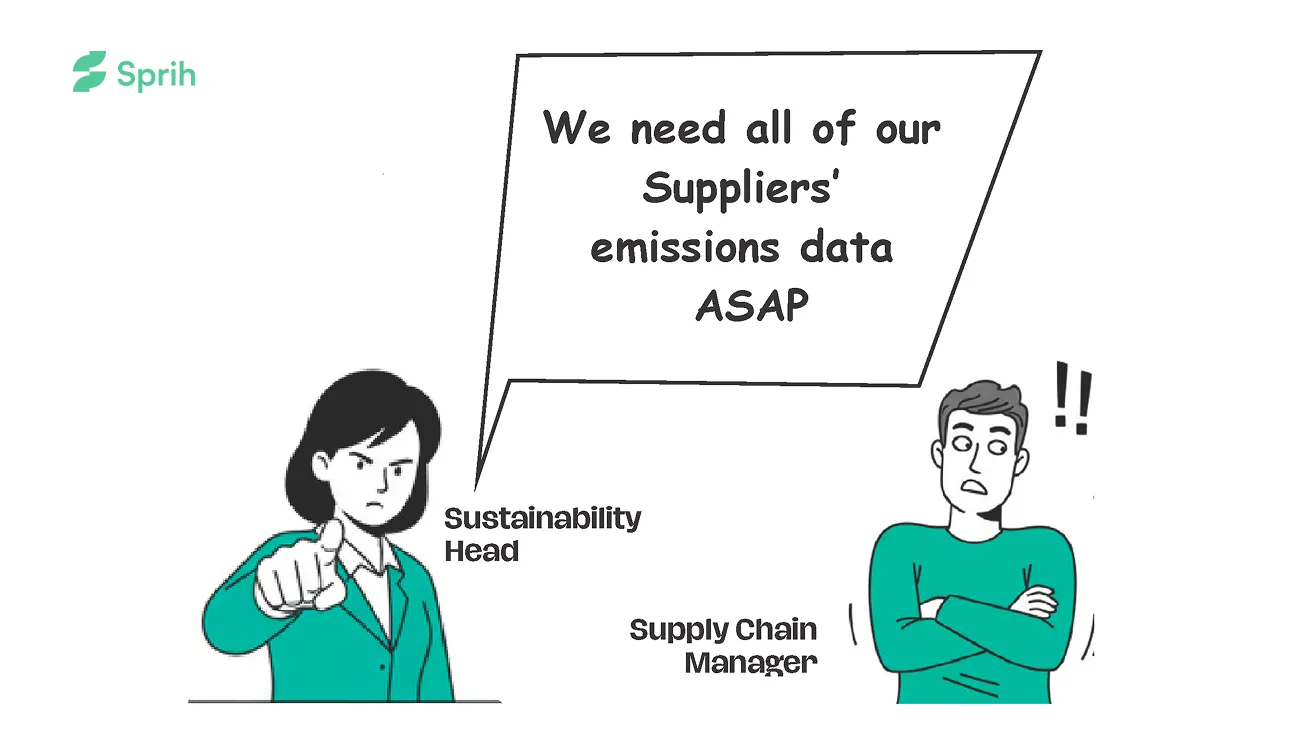In the fight against climate change, understanding how greenhouse gas (GHG) emissions are measured is essential. Businesses, governments, and individuals all need reliable data to track their environmental impact and make informed decisions. This is where emission factors come into play.
Emission factors (EF) provide a standardized way to estimate the emissions produced by different activities, from electricity generation to transportation and industrial processes. By using them, we can assess our carbon footprint more accurately and work toward sustainability goals.
But what are emission factors, and why do they matter? This guide breaks down their definition, importance, calculation methods, and real-world applications.
What Are Emission Factors?
EFs are values that represent the amount of GHG emissions released per unit of activity. They act as multipliers that help estimate emissions from various sources.
For example, if a gasoline-powered vehicle emits around 2.3 kilograms of CO₂ per liter of fuel burned, that number becomes its EF. Similarly, electricity from coal-fired power plants has an EF based on the CO₂ released per kilowatt-hour (kWh) of electricity generated.
These factors make it easier to calculate emissions across different sectors, ensuring consistency in reporting and analysis.
Why Are They Important?
EFs play a crucial role in climate science, business sustainability, and environmental policy. Here’s why they matter:
- Standardization: They provide a consistent way to measure emissions, making comparisons across industries and regions more reliable. Without standardization, tracking progress toward emission reduction goals would be nearly impossible.
- Accuracy: Using well-researched EFs leads to more precise estimates. This helps organizations and policymakers make informed decisions based on real-world data.
- Benchmarking Performance: Companies and industries use EFs to compare their environmental impact against industry standards and competitors. This benchmarking drives improvements in efficiency and sustainability.
- Regulatory Compliance: Many governments require organizations to use specific EFs for reporting. Compliance with frameworks like the Greenhouse Gas Protocol and environmental laws depends on accurate emission factor usage.
How is the Calculation Done?
Emission factors don’t come out of thin air. Scientists and regulatory bodies develop them using detailed research and data analysis. The process involves several key steps:
- Data Collection: Researchers gather data from real-world measurements, industry reports, and scientific studies. Government agencies and international organizations often compile EF databases.
- Activity Data Identification: Each emission factor corresponds to a specific activity—like burning fuel, producing cement, or generating electricity. Identifying these activities correctly ensures accurate calculations.
- Emission Calculation: Researchers analyze emissions per unit of activity. They use statistical models and historical data to determine average values while accounting for variations and uncertainties.
- Validation and Updates: Emission factors undergo peer review and comparison with existing literature. As technologies evolve, researchers update emission factors to reflect new efficiency levels and cleaner processes.
Common Emission Factors Across Sectors
Different industries have unique emission sources, and their EFs vary accordingly. Here’s a look at some of the most common ones:
1. Electricity Generation
- Coal-Fired Power Plants: ~0.9 to 1.0 kg CO₂e per kWh
- Natural Gas-Fired Power Plants: ~0.4 to 0.5 kg CO₂e per kWh
- Solar Power: ~0.02 to 0.05 kg CO₂e per kWh
- Wind Power: ~0.01 to 0.03 kg CO₂e per kWh
- Hydropower: ~0.01 to 0.05 kg CO₂e per kWh
2. Transportation
- Gasoline-Powered Vehicles: ~2.3 kg CO₂e per liter of fuel
- Diesel-Powered Vehicles: ~2.7 kg CO₂e per liter of fuel
- Electric Vehicles: Emission factors depend on the energy source used for charging. If powered by coal-generated electricity, emissions can reach ~0.9 kg CO₂e per kWh.
3. Industrial Processes
- Cement Production: ~0.9 kg CO₂e per kg of cement
- Steel Production: ~1.8 kg CO₂e per kg of steel
These factors provide a general estimate, but actual emissions vary based on efficiency, location, and technological advancements.
Applications of Emission Factors
EFs aren’t just numbers—they play a vital role in environmental management and policy-making. Here are some key ways they are used:
1. Corporate GHG Reporting
Businesses use emission factors to calculate their carbon footprint. Many organizations include this data in sustainability reports and regulatory filings.
2. Life Cycle Assessment (LCA)
LCA studies evaluate the environmental impact of products and services from production to disposal. EFs help quantify emissions at each stage of the life cycle.
3. Government Policies and Regulations
Regulators rely on emission factors to set emission limits and create climate policies. Carbon taxes, cap-and-trade programs, and fuel efficiency standards all depend on these calculations.
4. Carbon Pricing and Trading
Emission factors determine the carbon cost of various activities. This influences carbon credit markets and helps organizations invest in emission reduction strategies.
Challenges and Considerations
While EFs are valuable, they come with limitations. Here are some challenges to keep in mind:
1. Data Quality Issues
The accuracy of emission factors depends on the data used to calculate them. Inconsistent or outdated data can lead to misleading estimates.
2. Regional Variability
Emission factors change depending on location. For instance, electricity grids in different countries have varying carbon intensities based on their energy mix.
3. Technological Advancements
As technology improves, emission factors need regular updates. Outdated factors may not reflect cleaner energy sources or more efficient industrial processes.
4. Sector-Specific Differences
Different industries have unique emission characteristics. Using a generic emission factor instead of a sector-specific one can lead to errors in calculations.
Emission factors are crucial for measuring and managing greenhouse gas emissions. They offer a standardized, reliable way to track environmental impact and support sustainability initiatives.
By understanding and applying EFs correctly, businesses, governments, and individuals can make informed decisions about reducing their carbon footprint. As policies evolve and cleaner technologies emerge, keeping up with the latest emission factors will be essential for accurate reporting and effective climate action.
Whether you’re an individual looking to reduce your carbon footprint or a company working on sustainability goals, understanding emission factors is a great first step.
Every action counts in the fight against climate change. Start measuring your impact today!
FAQs
What are Emission Factors and why are they important?
Emission factors are standardized values that estimate greenhouse gas (GHG) emissions produced per unit of activity, such as fuel burned or electricity consumed. They are crucial for accurately calculating carbon footprints, tracking sustainability goals, and ensuring consistent reporting across industries.
How are Emission Factors calculated?
Emission factors are developed through detailed research, real-world data collection, statistical modeling, and validation by scientists and regulatory bodies. They are regularly updated to reflect new technologies and changing environmental impacts.
What are common examples of Emission Factors across industries?
Examples include ~2.3 kg CO₂e per liter of gasoline burned in vehicles, ~0.9 kg CO₂e per kWh from coal-fired electricity, and ~0.9 kg CO₂e per kilogram of cement produced. Each industry has unique emission factors depending on the processes involved.
How do businesses use Emission Factors in sustainability reporting?
Businesses use emission factors to calculate and report their GHG emissions in sustainability reports, regulatory filings, and life cycle assessments. Accurate use of emission factors is essential for benchmarking environmental performance and complying with standards like the GHG Protocol.
What are the challenges in using Emission Factors?
Challenges include regional variability, outdated data, sector-specific differences, and technological advancements that require regular updates to maintain accuracy in emissions calculations and sustainability reporting.














